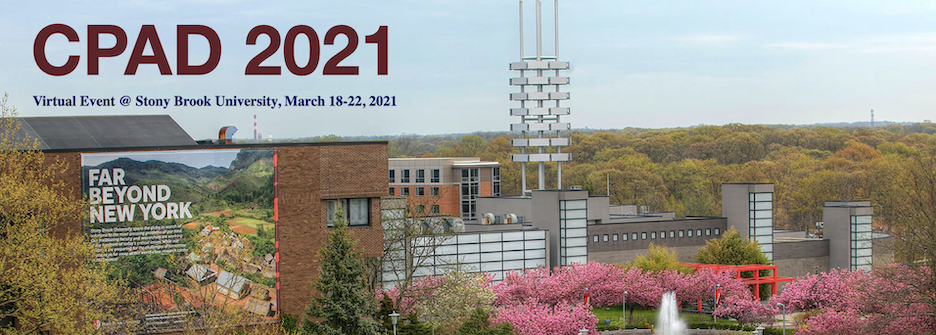Speakers
Description
The “muon-to-electron conversion” (Mu2e) experiment at Fermilab will search for the Charged Lepton Flavour Violating neutrino-less coherent conversion -N(A,Z) e-N(A,Z) of a negative muon into an electron in the field of an aluminum nucleus. The observation of this process would be the unambiguous evidence of physics beyond the Standard Model. Mu2e detectors comprise a straw-tracker, an electromagnetic calorimeter and an external veto for cosmic rays. The calorimeter provides excellent electron identification, complementary information to aid pattern recognition and track reconstruction, and a fast online trigger. The detector has been designed as a state-of-the-art crystal calorimeter and employs 1348 pure Cesium Iodide (CsI) crystals readout by UV-extended silicon photomultipliers (SiPM) and fast front-end and digitization electronics. A design consisting of two annular disks positioned at the relative distance of 70 cm downstream the aluminum target along the muon beamline satisfies Mu2e physics requirements.
The front-end electronics consists of two discrete chips (Amp-HV) for each CsI crystal directly connected to the back of the SiPM pins. These provide the amplification and shaping stage, a local linear regulation of the SiPM bias voltage, monitoring of current and temperature of the sensors and a test pulse. The SiPM and front-end control electronics is implemented in a battery of mezzanine boards each equipped with an ARM processor that controls a group of 20 Amp-HV chips, distributes the low voltage and the high-voltage reference values, sets and reads back the locally regulated voltages. The mezzanine boards are hosted in crates located on the external lateral surface of the calorimeter disks. The crates also host the waveform digitizer board that perform digitization of the amplified and shaped SiPM signals and transmit the digitized data to the Mu2e DAQ. The core of the DIRAC board is a large FPGA SoC (MicroSemi® SmartFusion2 M2S150T), that handles 10 ultralow-power double channels 12 bits and maximum sample rate of 250 MSPS analog-to-digital converters ADCs (Texas Instruments® ADS4229) protocol and timing, sparsifies and compresses the digitized data and forms a packet that is sent optically, thru a dual fiber optical transceiver (Cotswork® RJ-5G-SX-DPLX) to the event builder using a custom protocol.
In this talk we will review the constraints on the calorimeter front-end and readout electronics, the design technological choices, and the status of components production, tests and commissioning.
